Map Of Yen Bai: A Majestic Landscape Painting Of Vietnam’s Northwest
Yen Bai stands out as a magnificent natural painting, blending golden terraced rice fields during harvest and shimmering water-filled steps in pouring season. It is also a land of towering mountains shrouded in mist year-round, warm mineral springs, and ancient villages where local ethnic communities preserve their vibrant and diverse cultures. Though nestled in the remote northern highlands, Yen Bai has captured the hearts of countless adventure lovers. Join us as we explore every facet of this peaceful land—nature’s masterpiece waiting to be discovered.
Geography & Administrative Divisions
Yen Bai is located in Vietnam’s Northwest region, bordering the Northeast. Its administrative center is Yen Bai City, situated about 180 km from Hanoi. The province’s terrain is shaped by three major mountain ranges—Hoang Lien Son, Con Voi, and Da Voi Mountains—along with lower areas consisting of valleys and low hills. This geographical diversity results in distinct variations in climate and landscape throughout the region. Such contrasts have given rise to Yen Bai’s uniquely famous tourist destinations and offer travelers a refreshing escape from stress as they move through its ever-changing terrain.
Here are some key geographical and administrative facts about Yen Bai:
Total area: approximately 6,887.7 km²
Population: around 890,000 people
Topography: mainly mountainous, with a mix of high peaks, river valleys, and terraced hillsides
Borders: shares provincial borders with Lao Cai, Ha Giang, Tuyen Quang, Phu Tho, and Son La
Region: Northwestern Vietnam
Administratively, Yen Bai includes:
1 provincial city: Yen Bai City (provincial capital)
1 town: Nghia Lo
7 rural districts: Van Yen, Van Chan, Mu Cang Chai, Tram Tau, Luc Yen, Yen Binh, Tran Yen
Note: Some districts have merged recently due to administrative reforms. Always check the latest official map for the most accurate district boundaries.
Climate & Best Time To Visit
Yen Bai offers two particularly beautiful seasons for travelers to explore:
Golden Rice Season (Mid-September to Mid-October): This is the harvest season, when the terraced fields turn a brilliant golden yellow, covering the hillsides in breathtaking color. The weather is cool and pleasant, often with cloudy skies—perfect for sightseeing and photography. This is an ideal time to observe the vibrant rhythms of local life and fully immerse yourself in the serene mountain landscape.
Water Pouring Season (May to June): As the summer rains begin, water is channeled into the terraced fields in preparation for a new rice crop. Locals call it “mua nuoc do” (the water-pouring season) because the fields shimmer like mirrors, especially at sunset, creating a surreal and mesmerizing view. This season offers a chance to see the harmony between nature and human cultivation.
Whether you visit during the harvest season or the watering season, the experience will be well worth it. But remember, Yen Bai is most beautiful at this time, so it draws many tourists. Be sure to book your accommodation at least a month in advance to avoid sold-out situations.
Top Attractions & Natural Wonders
Muong Lo Field
Muong Lo Field is the second-largest rice field in the majestic and poetic Northwest mountains of Vietnam. Located about 80 km west of Yen Bai city, this vast plain lies nestled among towering mountain ranges.
From a mountain pass above, visitors are captivated by the smooth, shimmering expanse of Muong Lo stretching all the way to the horizon. The area is famed for its white rice, flavorful plain rice, and specialty tea. A trip to Yen Bai would be incomplete without a stroll through this immense field—a place that preserves the untouched beauty of nature and the rich cultural heritage of the region.
Mu Cang Chai Terraced Rice Fields
Mu Cang Chai is a small town nestled at the foot of the Hoang Lien Son mountain range, best known for its iconic terraced rice fields. The landscape is beautiful year-round, but its most stunning seasons are during the water-pouring months of April and May, when the fields resemble giant mirrors reflecting the sky. At this time, farmers plant young rice shoots, creating a fresh mix of green and white across the hills.
From September to October, the fields turn golden, attracting photographers and visitors from all over. In winter and spring, Mu Cang Chai is painted in the soft pink hues of blooming “to day” flowers.
Khau Pha Pass
As one of the “Four Great Mountain Passes” of Northwest Vietnam, Khau Pha Pass stands tall like a “horn piercing the sky.” The pass is surrounded by majestic mountain ranges and layers of white clouds drifting between the peaks. It is renowned as one of the most winding and steep mountain roads in Vietnam. As you reach the summit of Khau Pha, a breathtaking highland unfolds before your eyes—encircled by rugged mountains, with a winding road cutting through ancient forests and terraced fields cultivated by the Thai and H’Mong ethnic groups.
One of the most thrilling experiences during the golden rice season is paragliding over the ripened fields. The takeoff point is usually located on a hilltop, about 1,200 meters above sea level. Visitors fly with professional pilots, with flight durations ranging from 10 to 20 minutes depending on weather conditions. Prices range from 2,000,000 to 2,500,000 VND per person per flight, varying between weekdays and weekends
Tu Le Valley
Tu Le Valley, located next to Mu Cang Chai and separated by the Khau Pha Pass, is a favorite stop for adventure travelers exploring Yen Bai. Often visited alongside Mu Cang Chai, Tu Le captivates with its charming Northwest landscapes, fragrant sticky rice, natural hot springs, and the spiritual traditions of the Thai ethnic people. Unlike many other destinations, Tu Le’s rice fields are not perched on steep hillsides or hidden deep in narrow valleys but lie gently across the land, creating a peaceful and welcoming atmosphere.
Tu Le is also home to one of the longest ziplines in Vietnam, part of the Aeris Hill adventure park in Van Chan District. Opened in 2020, the zipline features two stages spanning a total of 1.2 km. The first stage, nearly 1 km long, offers panoramic views of the valley and surrounding mountains. The second stage takes visitors to the pickup point for a return ride. Riders under 50 kg are given an extra 10 kg sandbag to maintain speed. The full experience takes about 2 minutes.
Pu Nhu Waterfall
Pu Nhu Waterfall is located just about 10 kilometers from the center of Mu Cang Chai District and is one of the most well-known attractions in Yen Bai Province. The waterfall resembles a traditional ink wash painting, enchanting visitors with its picturesque beauty.
Its cool, fresh climate combined with the untouched, majestic natural surroundings is what makes Pu Nhu Waterfall so captivating. It is truly an ideal destination for those seeking to immerse themselves in nature, cool off in the refreshing waters, and relax in a peaceful, tranquil setting.
Ta Xua Mountain
Ta Xua Peak stands 2,000 meters high, located along the border between Yen Bai and Son La provinces. It ranks among the 15 highest mountains in Vietnam. There is only one steep, challenging road leading to the summit, making it a must-visit for trekking and adventure lovers.
One of Ta Xua’s most iconic spots is the “Dinosaur Spine ridge”—an extended mountain range that juts out into a deep valley, featuring popular photo spots like Dolphin Rock and the Lonely Tree. For the best cloud-hunting experience, visit between October and April, when the “cloud seas” are at their thickest and most magical. Sunrise from Ta Xua Peak is also stunning, with the first rays of light piercing through floating clouds and distant terraced fields emerging gently from the morning mist.
Suoi Giang Commune
When talking about Yen Bai, one cannot miss Suoi Giang—and when mentioning Suoi Giang, the endless and renowned Shan Tuyet tea hills are a must-see. Some of these ancient tea forests have trees that are hundreds of years old, with pale, aged trunks.
Located at an altitude of 1,300 to 1,400 meters, nestled among the clouds, Suoi Giang enjoys a cool climate year-round—often referred to as the “Sapa of Yen Bai.” In addition to its dreamy natural scenery, visitors who come in spring can take part in unique local festivals such as the Gau Tao Festival and the ancestral tea tree worship ceremony. Most notably, tourists can also savor traditional Northwestern dishes that are rich in local flavor.
Thac Ba Lake
Thac Ba Lake, often referred to as the “Ha Long Bay in the mountains,” is one of Vietnam’s three largest man-made lakes, formed during the construction of the Thac Ba Hydropower Plant. Located in Yen Binh and Luc Yen districts, the lake spans nearly 20,000 hectares and features over 1,300 lush islands and a network of limestone caves hidden within mountain ranges. Travelers to Yen Bai can take a boat cruise around these islands to fully appreciate the lake’s serene beauty and fresh atmosphere. The tranquil scenery creates a shimmering, picturesque landscape that leaves a lasting impression on all who visit.
Cu Vai Village
Cu Vai Village is a peaceful and rustic settlement of the Hmong people. A visit to this charming village during your Yen Bai tour offers a chance to explore the unique cultural features of the local community, admire the simple wooden stilt houses, and especially try on the distinctive traditional costumes of the Hmong. The village’s poetic scenery is often draped in a veil of white clouds drifting gently over the vast mountains and forests—a sight that is sure to captivate visitors from the very first glance.
Tram Tau Hot Springs
Tram Tau is a remote district in Yen Bai Province, home to a 100% natural hot mineral spring that offers great health benefits. October is the golden time to visit Tram Tau Hot Spring. During this month, the terraced rice fields turn a brilliant golden yellow, creating the perfect setting for soaking in warm mineral waters while admiring the breathtaking beauty of the ripened rice paddies.
In October, the weather in Yen Bai is pleasantly cool, with a slight chill in the evening—making Tram Tau Hot Spring an ideal getaway from the heat of Hanoi. For the best experience, plan your visit in early or mid-October, as the rice is typically harvested by the end of the month.
Cuisine & Local Specialties
Grilled Lake Thac Ba Fish
A trip to Yên Bái would not be complete without savoring its signature fish dishes—whether grilled, steamed, or served in a rich hotpot. These specialties capture the essence of the mountains and vast lakes of the region. Thác Bà Lake alone yields thousands of tons of fish each year, making it a culinary highlight for visitors. During your journey to Thác Bà, don’t miss out on the grilled fish—a standout dish. Freshly caught fish are prepared daily and transformed by the skilled hands of the locals into truly unique and flavorful meals.
Smoked Buffalo Meat
Smoked buffalo meat is made from fresh, high-quality cuts. The buffaloes are free-range and graze naturally on forest plants and grasses, which gives the meat a firm texture and rich flavor. After being marinated with signature Northwest spices such as mắc khén and wild chili, the meat is skewered and hung above a fire to dry. This delicacy makes an excellent gift, often packaged in convenient 1 kg or 500g zip bags for easy transport.
Black Sticky Rice Cake
Muong Lo black square sticky rice cake is not only unique for its color but also captivating in flavor. It is made from dong leaves, Tu Le glutinous rice, mung beans, and fatty pork belly. To achieve its dark color, the Thai people burn the bark of the nuc nac tree or black sesame flowers into charcoal, grind it into a fine powder, and mix it with the rice. The cake is handmade with great care, from the preparation steps to precisely controlling the boiling time. Once reserved for Tet holidays or ancestral ceremonies, this delicacy is now popular year-round and often bought as a meaningful gift.
Nam Pia
The main ingredients of this dish are the internal organs of herbivorous animals, combined with a thick, paste-like liquid taken from the small intestines of cows, goats, buffaloes, or horses. Everything is simmered until tender with various spices such as local herbs, powdered sẻn seeds (a signature spice of the Northwest), mac khen, garlic, chili, and chopped sawtooth coriander. Nam pia is served in a bowl with a thick, dark brown sauce. At first taste, it can be bitter and slightly pungent, but it leaves a lingering sweetness along with the distinctive flavor of mac khen. It can be used as a dipping sauce for grilled meats or enjoyed alongside steamed goat or beef.
Bamboo Shoot Wraps With Meat
Vau bamboo shoots from Yen Bai are considered the tastiest and sweetest compared to those from other regions. The bamboo shoot season lasts from December to March each year. Visiting Yen Bai during this time, travelers can enjoy bau bamboo rolls with pork—one of the dishes locals are most proud of.
The bamboo shoots are boiled until tender, then thinly sliced and wrapped around seasoned pork. Once rolled, the bundles are steamed over medium heat until both the bamboo and meat are cooked evenly.
Grilled Chicken With Mac Mat Leaves
Northwestern-style grilled chicken has a uniquely fragrant aroma. Wandering through the Mu Cang Chai market, visitors are often drawn from afar by the irresistible scent coming from grilled chicken stalls. The chicken is thoroughly marinated with spices, then stuffed with mac mat leaves before being grilled over hot charcoal. Once cooked, the meat retains its natural sweetness. This dish is best enjoyed with cham cheo dipping sauce—an unforgettable combination.
Sticky Rice With Ant Eggs
A signature delicacy in Mu Cang Chai is ant egg sticky rice. Black ants usually lay their eggs in the spring, and during this season, the Tay, Dao, and Thai ethnic groups venture into the forest to gather them for cooking. The combination of Mu Cang Chai’s upland sticky rice and ant eggs from the Northwestern forests creates a truly memorable dish. However, those with sensitive or allergy-prone bodies should be cautious when trying this unique specialty.
Crispy Fried Stink Bugs
In April, longan flowers bloom in full, and with their season comes the rapid growth of stink bugs. These insects feed on nectar and tree sap. To protect the trees, locals in Van Chan head out to catch them. Once collected, the bugs are thoroughly cleaned, then prepared with a splash of lime juice and finely chopped lime leaves—turning into a unique, crunchy dish perfect for snacking. Over time, stink bugs have become a local specialty in Yen Bai and now appear on the menu of many restaurants in the area.
Tu Le Green Rice Flakes
Tu Le Commune is renowned for its unique glutinous rice variety, which produces dark green young rice flakes (cốm) that taste best when freshly made. The harvested rice must be processed the same day. After removing the unfilled grains, the rice is roasted, cooled, and pounded in stone mortars. Every step in making Tu Le cốm is done entirely by hand. The resulting flakes are soft, chewy, and fragrant, with a slightly bitter aftertaste that turns into a light sweetness. Cốm is often enjoyed with ripe persimmons, bananas, or used in dishes like duck porridge, sticky rice, sweet soups, and savory items such as cốm patties or fried spring rolls.
Apple Cider Wine
Yen Bai’s fermented tao meo wine has long been a famed specialty of the region. If you travel here, it would be a pity to miss this distinctive local spirit. To prepare the best tao meo wine, one must select slightly flattened fruits that have ripened to a translucent golden yellow.
The wine reaches peak flavor after being steeped for several months, turning a clear golden hue. Visitors can buy ready-made bottles in Yen Bai or purchase fresh fruits to ferment at home. This wine has excellent shelf life, and once the first round is consumed, more alcohol can be added to continue infusing the fruit—though the second brew tends to have a much milder taste.
Culture & Festivals
Ethnic Diversity
Located at the gateway to Vietnam’s Northwest region, Yen Bai Province has long served as a settlement stop for migratory groups moving from the Red River Delta and from the north. Today, this land is home to 30 ethnic groups, with ethnic minorities making up the majority of the population. The ethnic communities in Yen Bai live interspersed rather than in clearly defined territories. However, each group still has its own areas where their population is more concentrated.
Tay ethnic group: Known for their unique traditional singing styles such as then, sli, and luon, and cultural festivals like Long Tong (Field Work Festival).
Dao ethnic group: Consists of many subgroups, each with distinct clothing, language, and customs. The Dao people in Yen Bai often engage in traditional crafts such as weaving, embroidery, and jewelry making.
Hmong ethnic group: Famous for their vibrant clothing with intricate patterns and festivals like Gau Tao. The Hmong in Yen Bai are primarily involved in farming and livestock raising.
Thai ethnic group: Renowned for their rich culinary culture, especially dishes made from sticky rice, and their graceful traditional xoe dances.
Festivals In Yen Bai
Like many other northern mountainous provinces, Yen Bai is home to numerous unique festivals that reflect the rich cultural identities of its ethnic groups.
The Cap Sac Festival of the Red Dao People
Cap Sac is an essential coming-of-age ritual for the Red Dao community, marking the maturity of a man or a woman. This age-old ceremony embodies the community’s wishes for prosperity and happiness. It also carries strong educational meaning—instilling traditional values, moral character, and a sense of responsibility toward family and society. The festival is typically held annually in November, December, or the first lunar month (January).
Ban Flower Festival in Muong Lo
Muong Lo, located in Yen Bai Province, is home to a large Thai ethnic community. The Ban Flower Festival is a joyful occasion for families and entire villages, as well as a time for young men and women to meet and court. Aimed at honoring the beauty of the ban flower and recognizing its deep cultural and spiritual significance among the ethnic groups of Dien Bien, the province has organized this festival annually since 2014. It takes place every March—when the ban flowers are in full bloom.
Bung Lo Festival of the Dao Ho People
The “Bung Lo” Festival, also known as the traditional Rain-Praying Festival of the Dao Ho people, is held between the 5th and 15th days of the 5th lunar month. In the Dao language, “Bung Lo” means “to pray for rain.” The community organizes this festival to ask Heaven, the deities, and their ancestors to bless the village with favorable weather and abundant rainfall.
Long Tong Festival of the Tay People in Kien Thanh
This is a traditional crop-praying festival held in early spring. It is the most vibrant and important celebration of the Tay ethnic group. Taking place on the 15th day of the first lunar month, the festival reflects the villagers’ hopes for favorable weather, thriving crops, and a prosperous, happy life. The Long Tong Festival is a rich community tradition, deeply rooted in humanistic values. It serves as a cultural tribute and expresses the spiritual desires of the Tay people.
Traditional Craft Villages In Yen Bai
Carrying within them the cultural values, customs, and daily life of local communities, many traditional crafts and village products in Yen Bai have not only been preserved but are increasingly asserting their value. This is thanks to innovation, integration with tourism and e-commerce, and alignment with the growing trend of green consumption.
Nghia An Brocade Weaving Village
Nghia An is known as the home of the Thai ethnic community. According to local elders, Thai people believe that an ideal woman must be skilled in growing cotton and weaving fabric. In every Thai household in Nghia An commune, both in the past and today, there are usually one or two looms for weaving. The art of brocade weaving has been passed down through generations, mainly from mothers to daughters.
Traditional Thai woven products are adorned with unique decorative patterns such as bo nghe, bo bua, bo mon, khau cut, ken cuom, and hang en. These motifs reflect a harmonious blend of lines, colors, and shapes, creating a distinctive identity of traditional Thai ethnic culture.
Tu Le Green Young Rice Making
Com (young green rice) is one of the signature treats of autumn. While Hanoi is famous for com from Vong Village, in the Northwest, travelers fall in love with Tu Le’s version—tender, fragrant green grains that fill the mountain air with their sweet aroma. Every year in September and October, when the terraced rice fields of Tu Le, Yen Bai, turn golden with ripening crops, locals eagerly prepare for a new com season. As com must be made from young, immature rice, it is only available in autumn. Visiting Tu Le in this season, you’ll be enchanted by the gentle scent of fresh com and the rhythmic sounds of pestles echoing through the villages.
Luc Yen Gemstone Painting Village
Luc Yen District in Yen Bai Province is renowned for its exquisite gemstone paintings, which are becoming increasingly popular on the market. The craft has brought high economic value and helped create stable jobs for local workers.
With skillful, artistic hands and vivid imagination, the artisans transform lifeless stones like ruby, spinel, sapphire, opal, aquamarine, garnet, and quartz into mesmerizing gemstone artworks. After an artist sketches the design with pencil or colored chalk on mica or wooden boards, the artisans first spread a layer of crushed stones across the surface to create a base. Then, they meticulously sprinkle color-matched gemstones to form the image, finishing by adding adhesive to bond the pieces together.
Dong Tam Shrimp Trap Weaving Village
Since the early 20th century, Dong Tam Village has been renowned for its traditional craft of weaving shrimp traps. This craft was established and has been preserved ever since Thac Ba Lake came into existence. Locals mainly rely on forest products and fishing in the lake, with shrimp trap weaving considered a primary source of income.
The traps are mostly woven from natural materials such as bamboo, neohouzeaua, and rattan, which are either harvested from nearby forests or purchased from neighboring communes. Thanks to a skilled workforce, Dong Tam’s shrimp traps are highly favored by consumers for their excellent quality—they are large, durable, well-crafted, resistant to algae, with tightly woven slats that make it easy for shrimp to enter but difficult to escape.
How To Get To Yen Bai
Yen Bai is about 150–200 km from Hanoi, and there are multiple ways to reach this peaceful destination, depending on your budget, comfort needs, and travel style.
Motorbike travel: If you’re a thrill-seeker or an experienced backpacker, traveling by motorbike offers a scenic and adventurous ride. The distance is quite long (around 200 km), so be prepared for fatigue. Make sure you have strong riding skills, follow traffic laws strictly, carry your ID and documents, and ideally travel in a group for safety. If tired, rotate drivers.
Coach (long-distance bus): This is the most commonly chosen form of transportation. Coaches are safe, fast, and suitable for everyone—including the elderly and children. Several bus companies operate daily trips between Hanoi and Yen Bai.
Private car: A very convenient option, especially if you want privacy and the freedom to stop along the way. Traveling by car allows you to take the expressway, saving time while enjoying the landscape in comfort.
Train: You can take the YB3 train, which departs at 18:10 and arrives in Yen Bai at 22:50. Alternatively, take trains SP1–SP3 to Lao Cai, which also stop at Yen Bai Station. This option is great if you want a more relaxed journey with fixed schedules.
Where To Stay In Yen Bai
The hotel and guesthouse system in Yen Bai is generally well-developed. In popular tourist destinations such as Mu Cang Chai, Nghia Lo, and Yen Binh, the number of accommodations is sufficient to serve large volumes of visitors. Even in districts where tourism is not yet highly developed, it is not difficult to find a hotel or guesthouse with relatively decent quality.
Mu Cang Chai: Offers a wide range of homestays, mostly traditional stilt houses of the Hmong people, providing an authentic local experience. There are also a few mini hotels and guesthouses in the town center.
Options: Mu Cang Chai Ecolodge, Homestay A Su, Mu Cang Chai Resort.
Nghia Lo: Features many mid-range hotels, budget guesthouses, and ethnic Thai-style homestays in nearby villages. Guests can stay in the town center or in scenic villages like Ban Deu or Ban Chao Ha.
Options: Muong Lo Hotel, Homestay Xoan, Nghia Lo Center Hotel.
Yen Binh (Thac Ba Lake): Mainly offers lakeside homestays with peaceful surroundings, ideal for relaxation. Some eco-resorts are also beginning to appear in the area.
Options: VuLinh Family Homestay, La Vie Vu Linh, Thac Ba Ecolodge.
Yen Bai City: Has the most modern accommodation options in the province, ranging from budget to high-end hotels. Suitable for business travelers or tourists seeking comfort and convenience.
Options: Huong Sen Hotel, Hoang Gia Hotel, Liberty Hotel.
Tram Tau: Mostly features traditional stilt homestays of the Hmong or Thai people. Some lodgings also offer traditional herbal bath services.
Options: Suoi Khoang Homestay, Ban Hoc Homestay.
Yen Bai—A Journey Of Emotions
Yen Bai is more than just a destination; it’s a place where you can find peace, immerse yourself in nature, and embrace a slower, simpler way of life. With its warm-hearted people, rich culture, and abundant natural beauty, this land offers the most authentic experiences you could ask for.
Come to Yen Bai—to discover the majestic beauty of its mountains and forests, to fall in love with its traditional culture, and to carry with you unforgettable memories etched deep in your heart.
>>> Tu Le Valley in Yen Bai: Things To Know Before You Go
>>> Best Things To Do In Mu Cang Chai - A Complete Travel Guide
Send us your comments about : Map Of Yen Bai: A Majestic Landscape Painting Of Vietnam’s Northwest
Required fields *
You might also be interested
Travel ideas
Need some inspiration? Discover some of the best tours in Vietnam, which are highly appreciated by our clients. An excellent starting point to help you choose the right trip to Vietnam, Laos, Cambodia, Burma or Thailand, whether you are traveling alone, as a couple, as a family or with friends.
And because this trip is yours, feel free to customize it as you wish!
Vietnam Cambodia Itinerary 14 Days
Hanoi – Hoa Binh – Mai Chau – Ninh Binh – Halong bay – Hue - Danang – Hoian – Saigon – Ben Tre - Can Tho – Saigon - Siem Reap Angkor - Tonlé Sap - Siem Reap – Ta Prohm - Departure
Vietnam 14 Day Itinerary
Vietnam 14-day itinerary covers the country’s top highlights and quintessential experiences for an unforgettable journey.
Honeymoon Tour Pakcages In Vietnam 12 Days
Saigon Arrival - City Tour – Mekong Delta – Danang – Hoian - by flight - Da Nang – Hanoi - by flight – Halong - overnight on junk – Departure
Authentic Hoang Su Phi Trekking Tours
Hoang Su Phi trekking tours take you to stunning terraces, meet few tourists, connect with locals and enjoy authentic culture.
Best Nha Trang Beach Tour 4 Days
Saigon/Hanoi – Nha Trang relaxation – Saigon/Hanoi – Departure
Mekong Delta Bike Tour Itinerary 7 Days
Cycle through the Mekong Delta in 7 days, discovering floating markets, orchards, craft villages, and tranquil green islands.
Are you interested in this tour?



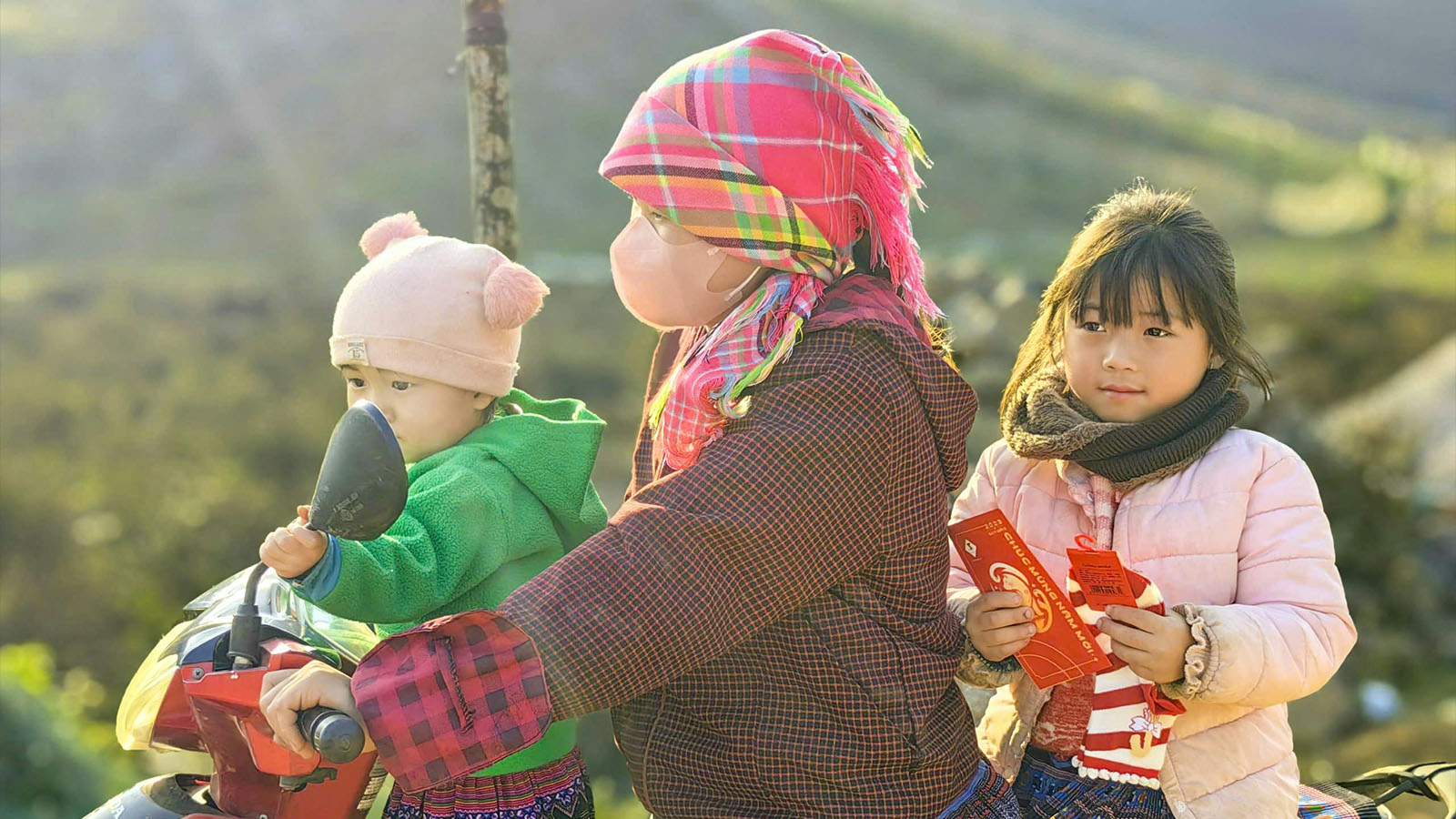




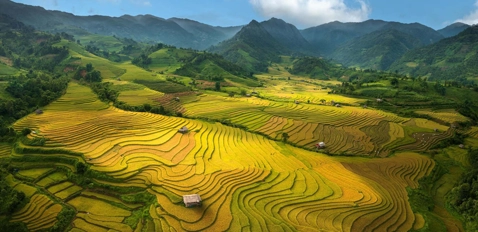

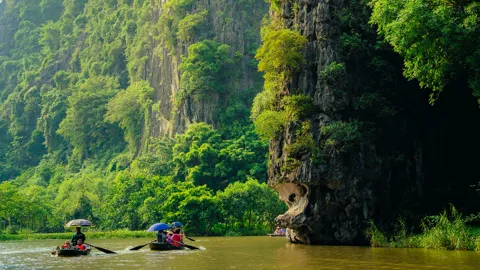








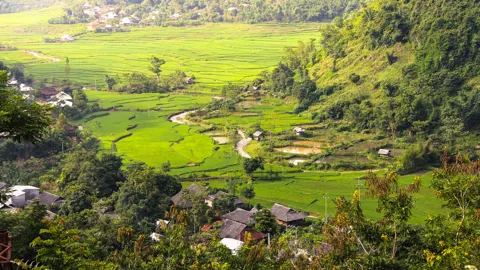
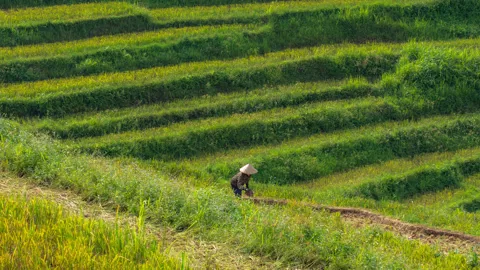



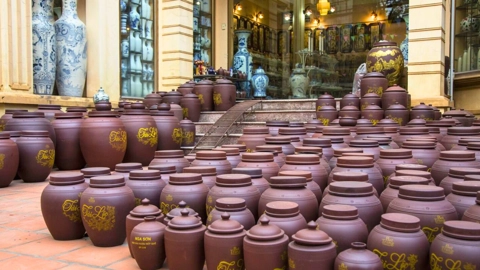













Comment